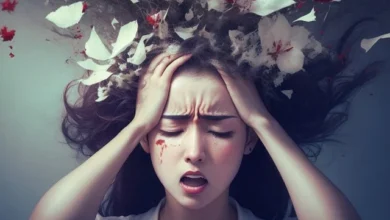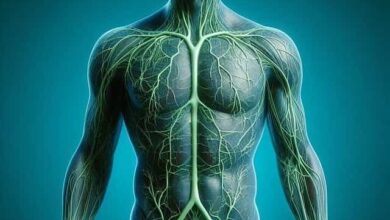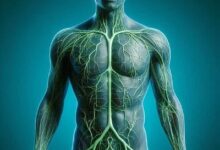DEMYSTIFYING MENTAL HEALTH: DECODING 10 MENACING MENTAL HEALTH DISORDERS
Mental Health
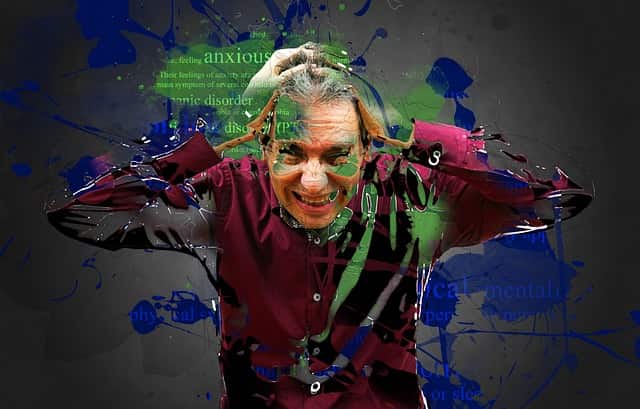
WHAT IS MENTAL HEALTH?
According to National Alliance, Mental Health Disorder or illness is a condition that affects a person’s thinking, feeling or mood for a sustained period of time that negatively impacts them. A person’s thinking, feeling or mood for a sustained period of time that negatively impacts them is called Mental Health Disorders. Mental Health entails emotional, psychological and social well being of individuals. Any sort of imbalance in said traits may results in severe outcomes.
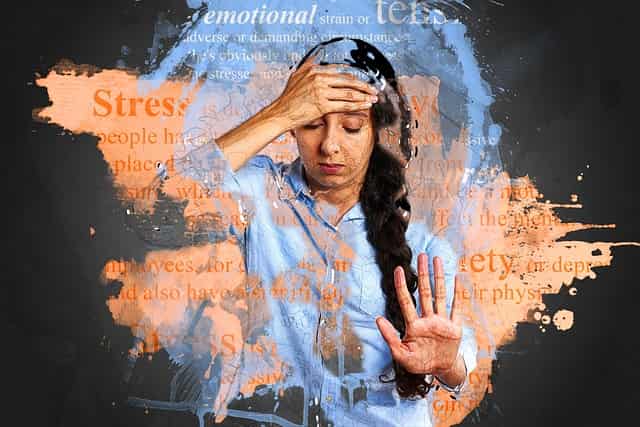
WHO Pakistan celebrate world mental health day on 10th of October every year. Research surveys reveal that the mental health accounts 4% of total disease burden in Pakistan. Women are found widely affected by it. Survey results showed that about 24 million people require psychiatrics support which is scarce (0.19 psychiatrics per 100000 people).
10 MOST COMMON TYPES OF MENTAL HEALTH DISORDERS
Anxiety Disorders
We know 18.1% doesn’t sound like a lot but that’s the number of adults in the US who suffer from anxiety disorders. 40 million people suffer from symptoms of an anxiety disorder every year.
Of those 40 million people, it’s estimated that only 36.9% of them will get help. Anxiety and depression co exists in most of the situations. There are certain types of anxiety i.e. generalized anxiety disorder (GAD), social anxiety disorders (SAD), Obsessive compulsive disorders (OCD) and panic disorders.
Almost all of above mentioned disorders are determined by some uncontrollable fears and worries and further intensified by other aspects as well like sleep, relations and environment.
But there are some very effective treatments which could overcome such adverse conditions like meditations and certain therapies.
Personality Disorders
Personality disorders refer to behavioral, emotional and thought patterns that deviate greatly from the expectations of an individualist culture. According to National Institute of Mental Health, about 9.1% of population exhibit traits of personality disorders.
The extensive body of research reveals that such differences which cause personality disorders are due to the impact of certain level of distress in relationships, workplaces, communities and due to dissonance of emotional approaches, responses, impulsive controls and environments.
Personality disorders can’t be cured but thankfully they can be treated. Although, personality disorders cannot be cured fully yet certain therapies could help in overcoming it.
Attention Deficient Hyperactivity Disorder (ADHD)
Attention Deficient Hyperactivity Disorder is a neuro-developmental disorder among children. The child confronting from ADHD may exhibit certain traits like
- Day dreaming
- Forget habit
- Talkative
- Careless behavior
- Least social in most of times
- Unnecessary risk takers
However, between 7.8 and 11% of children aged four to 17 are diagnosed with ADHD any given year. ADHD affects people of all ages and includes multiple symptoms such as inability to concentrate, forgetfulness, inability ability to sit still, restlessness and losing things.
Post traumatic Stress Disorder (PTSD)
Did you know that an estimated 6.8% of the US population will develop some form of post traumatic stress disorder which nearly counts 19 million populations in US? So how does this happen?
You, me, everybody will get stressed out by something in our lives due to some high tense situations or experiences. But what if the mind and body don’t get the memo? Post traumatic stress disorder refers to a prolonged fight or flight response that happens after the stressful event has stopped.
In more severe conditions, PTSD transforms into CPTSD i.e. complex post traumatic stress disorder. It may be due to continuous traumatic situational encounters like child abuse. The patients of CPTSD or PTSD see flashbacks, nightmares, panics and fears.
However, the therapies and treatments are there like trauma therapy, Eye movement desensitization reprocessing (EMDR) or cognitive behavioral therapies and dialectical behavioral therapy.
Depression
An estimated 6.7% of the US population over the age of 18, 15.7 million people lives with depression. It is worth mentioning that the off moods occasionally are considered normal because of certain environmental situations, work pressures and emotional stress but if it prolonged through 6 weeks than it’s worth noticing.
Depression manifests differently in women than men. Women tend to experience depression as feelings of sadness, worthlessness and shame or guilt.
Common treatments for depression include cognitive behavioral therapy, CBT, interpersonal therapy, IPT, psychodynamic therapy, psycho education groups, antidepressants and various brain stimulation therapies.
Bipolar Disorder
An estimated 2.8% of the US population that sought mental health treatment was diagnosed with some form of bipolar disorder in 2018. This number may be low, as many individuals who suffer from any mental health disorder do not seek treatment.
Bipolar disorder means a lot more than just really bad mood swings for a couple of reasons. First people diagnosed with bipolar disorder cannot completely control these mood swings and in second, these mood swings range from manic, feeling super happy or invincible, doing crazy spontaneous actions.
Living with bipolar disorder isn’t easy but people struggling with the disorder can find a variety of medications and traditional counseling treatments to help them find more balance.
Eating Disorders
Did you know there are almost as many people living with eating disorders as there are with bipolar disorder?
It’s true.
Approximately 2.7% of individuals who sought treatment were diagnosed with an eating disorder in 2018. The most common question people ask about eating disorders is what’s the difference between not being happy with your body and having an eating disorder? The individual in distress or certain level of complexes may develop symptoms.
Everyone needs food, so how is someone who has such a terrible relationship with eating and body image supposed to get better?
Recovery from an eating disorder is totally possible. With a combination of talk therapy, residential treatment and medications to treat the symptoms of any are underlying mental health conditions.
Obsessive Compulsive Disorder
If obsessive compulsive disorder, OCD is a type of anxiety disorder, why does it make the number eight spot?
Simple professional’s day 2.3% of individuals will qualify for a diagnosis of OCD during the course of their lifetime.
The common stereotype of an individual diagnosed with obsessive compulsive disorder, OCD is if someone obsessed with cleaning or counting to a comical degree but that’s not the whole picture.
Organizing and arranging and hoarding. Having obsessions is different from being detail oriented or a little type A because individuals who suffer from obsessions experience crippling anxiety due to these thoughts they’re unable to control.
So what is someone who lives with the reality of OCD to do?
Although there’s no cure for OCD, a combination of medical and talk therapy will help them manage their symptoms effectively.
Autism Spectrum Disorder (ASD)
We’ve been hearing more and more about autism spectrum disorder ASD in recent years. That’s because approximately 1.2% of children, one in 59 children will qualify for a diagnosis of autism spectrum disorder in the coming year.
Although, ASD normally start in early childhood but in most of cases it is not diagnosed at that time rather diagnosed in adolescence or adulthood. ASD show symptoms like impaired social interaction, communication and learning. The individual with ASD normally unable to understand expressions and social signs.
ASD patients remain lost in their own thoughts, repetitive thinking patterns, and problems in eye contact and troubling in communications.
There are some common treatments for the ASD patients like special classes, applied behavioral analysis therapy (ABA), speech therapy, behavioral therapy, medications and occupational therapy.
Schizophrenia/ Psychotic Disorders
Schizophrenia is devoted as impairment in perceiving the reality and alterations in behavioral relating to delusions, hallucinations, emotional instability, disorganized thinking , extreme agitations and significantly negative and disorganized behaviors.
Did you know three out of 100 people will experience the symptoms of psychosis in their lifetime?
Yep, this means 1% of the population suffers from a psychotic disorder. It is observed and research the normally people encountered their first psychotic break between 15-30 years of age which impact nearly 100000 adults every year. But it is not compulsive that if someone having psychosis may exhibit psychotic disorders. Certain medications, drugs and stress can cause temporary psychosis.
For individuals with a psychotic disorder however, the symptoms last longer than six months.
Schizophrenia is the most common psychotic disorder but the DSMV recognize a few others.
CONCLUSION
Mental health’s disorders are considered as complex and often least understood mental situations which can significantly influences the lives of affectees. It is worth mentioning that such disorders are not due to some internal weaknesses or lack of will power but it originates from the genetics, environments and neurological reasons.
It is extremely important to timely identify and diagnose mental health disorders like depression, anxiety, PTSD and schizophrenia to provide treatment, compassion and care to affectees.
Most of the mental health problems may become extremely detrimental in later stages of life if they left unattended. The symptoms of anger, anxiety, depression and stress must be addressed and reported by well aware parents to make our society healthy and empathetic.
Frequently Asked Questions
What is mental health?
Mental Health Disorder or illness is a condition that affects a person’s thinking, feeling or mood for a sustained period of time that negatively impacts them. A person’s thinking, feeling or mood for a sustained period of time that negatively impacts them is called Mental Health Disorders.
What is status on mental health in Pakistan?
WHO Pakistan celebrate world mental health day on 10th of October every year. Research surveys reveal that the mental health accounts 4% of total disease burden in Pakistan. Women are found widely affected by it. Survey results showed that about 24 million people require psychiatrics support which is scarce (0.19 psychiatrics per 100000 people).
What are personality disorders?
Personality disorders refer to behavioral, emotional and thought patterns that deviate greatly from the expectations of an individualist culture.
What is ADHD?
Attention Deficient Hyperactivity Disorder is a neuro-developmental disorder among children. The child confronting from ADHD may exhibit certain traits like
· Day dreaming
· Forget habit
· Talkative
· Careless behavior
· Least social in most of times
· Unnecessary risk takers



